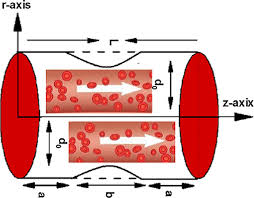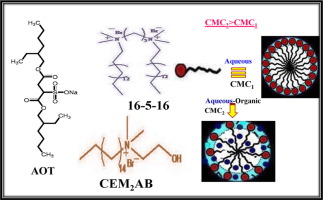Linear Oscillation of an inextensible cable
Linear Oscillation of an inextensible cable connected satellites system under the influence of air resistance, magnetic force and the shadow of oblate earth due to solar pressure about the position of stable equilibrium for small eccentricity in elliptic orbit near the parametric resonance n=½.
Uday Narayan Jha1, Dr. Byas Sharma2
Research Scholar Dept. of mathematics B.R.A.B.U Muzaffarpur 1
Retd. Prof. of Dept. of mathematics; B.R.A.B. University, Muzaffarpur2
ABSTRACT
This paper is devoted to study the linear oscillation of the system about the stable position where the system oscillates like a dumb-bell satellite with constant amplitude and phase varying with true anomaly. B.K.M. method has been exploited to get the general solution valid at and near the parametric resonance n=½.
INTRODUCTION :
The Russian mathematicians Beletsky; V.V. (1965) made significant studies exploring the effect of perturbative forces on cable-connected satellites system. Similar problems have been studied in details by Demine (1968) ; Singh; R.B.;Sinha S.K.; Das; S.K. Sharma; B. and Singh; C.P.
Linear oscillation of the system about the stable position of equilibrium for small eccentricity e of the orbit at and nearer the parametric resonance n=½.
The equation of the motion of one of the two satellites system in the central gravitational field of oblate earth under the influence of air resistance, magnetic force and shadow of the earth due to solar pressure in polar form is given by –
……………..(1)
Where, = Oblateness force parameter.
= Parameter due to shadow of the earth and solar pressure.
c= magnetic force parameter.
= Air resistance force parameter
; v= True anomaly of the orbit of centre of mass
p = focal parameter
Here dashes denote differentiation with respect to true anomaly v
The stable equilibrium position is given by-
………………………………(2)
The equation of small oscillation about the stable equilibrium position is obtained by putting from (1) assuming e to be small quantity of first order infinitesimal as:
….(3)
Where, ……………….(4)
Now, let us construct the general solution of the oscillatory system based on B.K.M. method which will be valid at and near the parametric resonance n=½. Assuming e to be small parameter, the solution in the first approximation of equation (3) at the parametric resonance n=½ can be sought in the form :
}………….………………………..(5)
The amplitude ‘a’ and phase present in (5) must satisfy the system of ordinary differential equations :
}……………………………(6)
Where, and are periodic solutions periodic with respect to of the system of partial differential equations:
and …………………..(7)
Where, is given by :
}…(8)
Now substituting the value of from (8) on the R.H.Side of (7) and then we get on integrating –
}……………………..(9)
Where,
…….(10)
Now, the periodic solutions with respect to of the system of equation (9) can be easily obtained as –
}……………………(11)
Putting the values of A1 and B1 from (11) in (6), we obtain –
}……. (12)
The system of equation given by (12) can be written as –
}…………..…………………….……(13)
Where, …………………….(14)
Clearly, the system of equations given in (13) is in canonical form must have a first integral of the form:
Which reduces the problem to quadrature.
Here, Co’ is the constant of integration.
But we are interested in qualitative study of the problem and hence we shall analyse the integral curves in the phase plane . In order to plot the integral curves, let us put the equation (13) in the form:
………………………..(15)
Where,
The integral curves have been plotted in fig.1 and fig.2 for n=0.495, n=0505 respectively for different values of and c0. Since curves drawn are closed, so we get the stability.
REFERENCES :
1. Demine; V.G. : Nauka, Moscow, 1968, Russia.
2. Singh; R.B. : The three dimensional motion of two connected bodies in a elliptical orbit. Bulletin of Moscow State University; Mathematical Mechanics No4 PP. 82-86, 1973 (Russia)
3. Sinha; S.K. : Effect of Solar pressure on the motion and stability of two interconnected satellites in elliptical orbit. A strophysics and space science-140 pp.49-54, 1988
4. Das; S.K. : Effect of magnetic force on the motion stability of two cable connected satellites in orbit, Proc, Nati. Acad. of Science, India, Vol. 43(4) pp. 287-299, 1976
5. Motion of a system of two cable connected satellites in the atmosphere; thesis submitted to B.U., Muzaffarpur in 1974.
6. Singh, C.P. : Motion and stability of interconnected satellites system in gravitational field of oblate earth; Ph.D. thesis submitted to B.R.A.B.U., Muzaffarpur in 1983.



